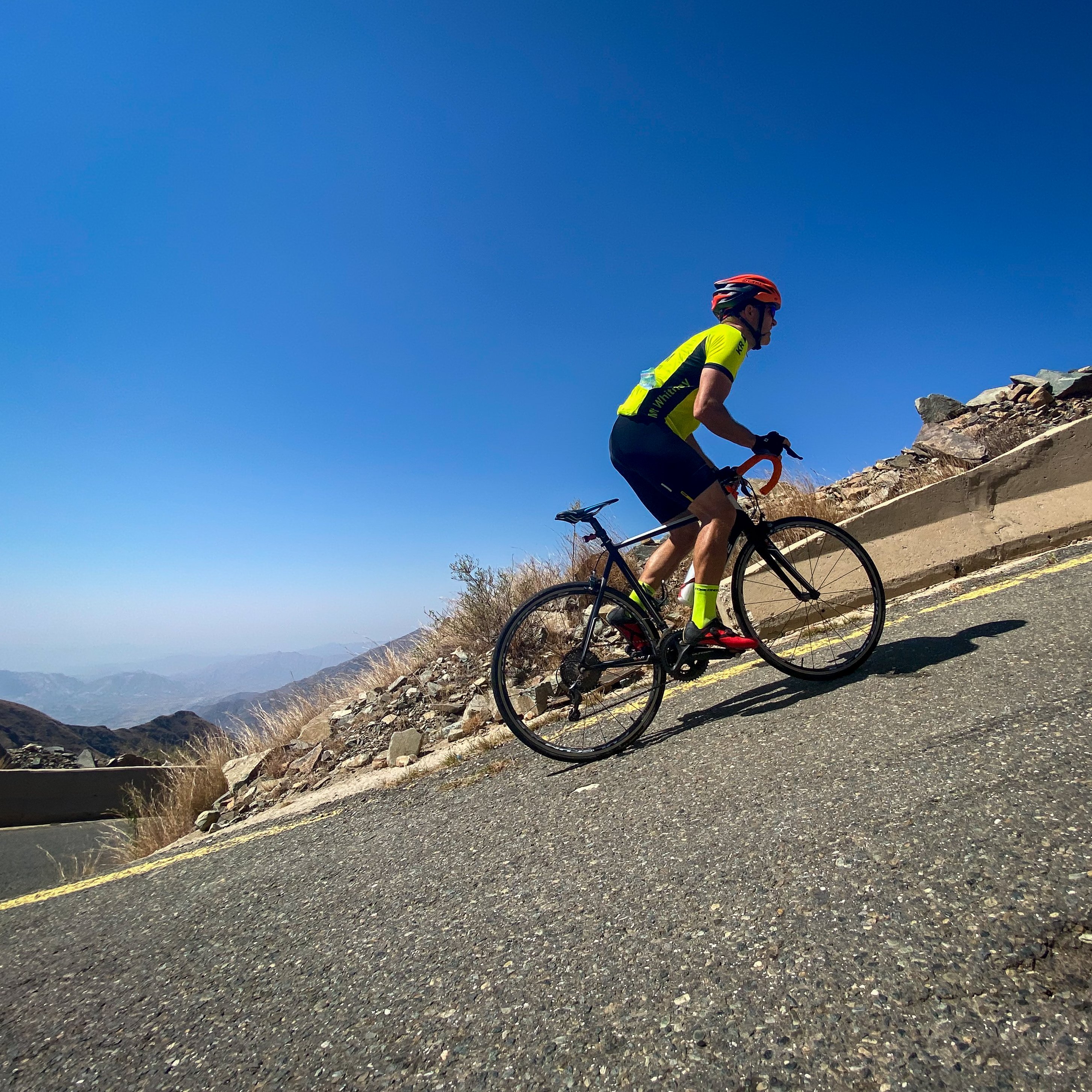It's the year 2030: ASO has been sold to the Saudis and just like the race formerly known as Paris-Dakar the Tour has been relocated to Arabia.
Nah, I'm just messing with you. Now that I've (hopefully) managed to grab your attention with my dystopian vision, let's talk more about potential races in Arabia (yeah, I'm not gonna talk about the obvious elefant in the room, because forum rules). The amount of absurdly hard, steep climbs that you find there is absurd. Now what's something that could grab the interest of some of the rich investors over there? How about a one day race for climbers with the hardest climb in the world (that gets used in an actual races)? Have it at the start or the end of the season with lots of price money and nice starting fees for top climbers/gc riders.
With the initial premise explained, let's get to the race:
Azir Mountains climbers challenge; 181km
The race starts in Abha, the capital of the Azir region with over 200,000 inhabitants.
Abha:
One of the main roads during the jacaranda tree blossom.
The short little uphill raise that you see top after 4.3kms is the short uphill drag up to Abu Kheyal Park, 500m at 7.6%. The main breakaway should form a bit later on the climb up to Al Soudah, that I've split into 2 different categorised climbs because of the false flat in the middle.
The first one is the climb to
Eastern Point View (a viewpoint to watch over the city),
4.6km at 5.5%. Then, after 9kms of uphillish false flat, the 2nd climb starts, the actual drag up to
Al Soudah proper, 3.3km at 4.9%.
Afterwards you have 47kms of slightly downhillish false flat, then the actual descent towards Muhayil starts. The steep part is 10kms at 6.5%, followed by 46kms at around 2% flase flat downhill until we reach the lowest point of the race near Muhayil.
Now the road starts going up again. Firstly it's a gentle 2% uphill drag for 18.5kms, followed by 4kms at 4.7%.
Now this is where the fun begins, now the real monster starts.
Al Jaadah Pass/Bihan Pass, 12.5kms at 14.3%
The guys at Pjammcycling have posted lots of footage of someone climbing this brute, this gives you an idea of how steep this one actually is and how surprisingly wide and nice the road is:
https://pjammcycling.com/climb/3038.Al-Jaadah-Pass;mode=Photo;name=Main
It's pretty much 2.5 times as long as the steep part of the Zoncolan and at a similar height as the Stelvio, HC indeeed.
The climb tops with 19.3kms to go, that means that the race won't be finished on top of this monster. The rest of the race is characterized by short descents, rolling terrain and short climbs. 8.1kms later we have a short climb,
1.5kms at 5.5%, followed by around 1.7kms of false flat and a descend that is 4.2kms at 5.3%.
Then the final climb of the day starts, up to
Assalam Park above Sabah. The actual climb is 2.5kms at 5.8%, the final 1.2kms of the race are flat and even slightly downhill in the end. I know, the race pretty much ends in the middle of nowhere, but the next slightly larger town is Al Haras and finishing there would mean adding 16km of rolling terrain in the end and I'm happy with the monster climb topping with a bit over 19kms to go.
















